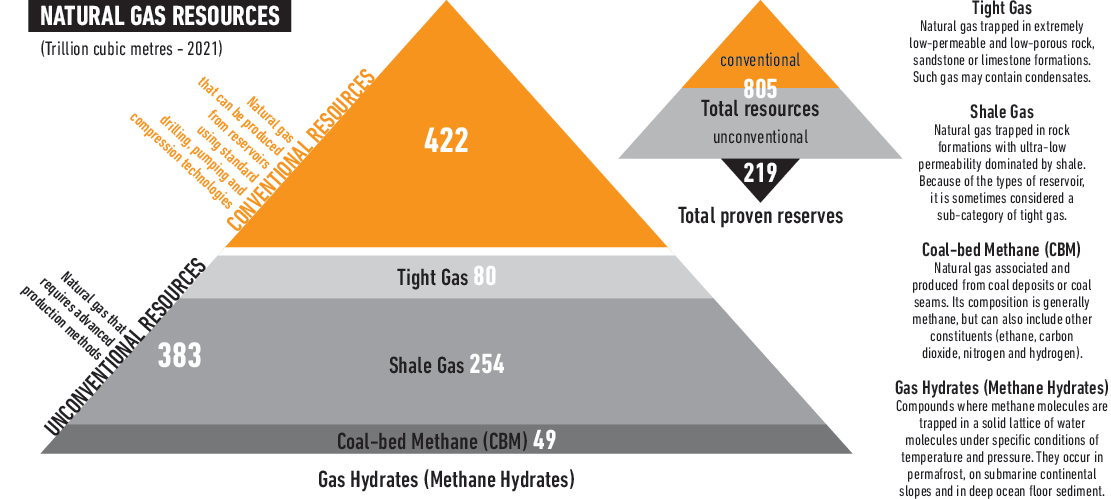Natural Gas Deposits and Production
Exploitable natural gas fields are found well below the surface of the Earth and its sea beds, generally at a depth of between 1500 and 3000 metres. Having a fairly low density (it weighs very little compared to the volume) and a strong tendency to expand, natural gas tends to rise to the surface, seeping through pores, cracks and other gaps in the rocky strata. When gas, during its ascent, encounters an impenetrable stratum that blocks its path, the fossil fuel accumulates, forming "stockpiles" that, once identified and surveyed, become natural gas fields that are potentially exploitable. If the area is promising, rock samples are extracted for analysis (core samples) and, if the results are positive, a well will be dug to begin the process of drilling. Natural gas that is discovered in the wells to be dissolved or situated above the stratum of oil is often called associated gas; in rarer cases, non associated gas, which is almost pure, can be found. Some of the gas reached by the drill will ascend freely through the pipes thanks to the pressure and its tendency to expand. Recovering this gas is a technically simple process as it is managed by series of pipes and valves on the surface. Most of the gas in the deposits, however, require pumping to be brought to the surface. One example of this is the characteristic horsehead pump. Once brought to the surface, the natural gas is cleaned and separated in order to obtain pure methane that can be stored or distributed.
- CER (Canada Energy Regulator), Canada's Energy Future 2021
- EIA (US Energy Information Administration), International Energy Statistics [Last Accessed 14 April 2023]
World Shale Resource Assessments [Last Accessed 18 April 2023]
Proved Reserves of Crude Oil and Natural Gas in the United States, Year-End 2021- GEFC (Gas Exporting Countries Forum), Annual Gas Market Report 2023
- IEA (International Energy Agengy), Resources to Reserves 2013 • World Energy Outlook 2022
- IGU (International Gas Union), Natural Gas Facts & Figures
- USGS (Unites States Geological Survey), Domestic Continues (Unconventional) Oil & Gas Assessments, 2000 - Present [Last Accessed 18 April 2023]
Enhancements in technologies for drilling and extracting natural gas and the physical and environmental advantages that this energy resource offers compared to other fossil fuels have contributed to an almost constant increase in worldwide production.
Since the 1980s, production has more than doubled; it is also strongly estimated that the gas reserves are sufficient for supporting the current rhythms of extractions for many decades to come. What is decisive in this production increase is surely the discovery of new deposits, which are continually deeper and in particularly remote areas, but also the possibility of extracting gas from so-called "unconventional" deposits (shale gas), considered up until just a few years ago as being unprofitable and not fit for extraction.
Of the over 4000 billion cubic metres of natural gas extracted in 2021, the United States and Russia are by far the largest producers in the world, followed by the Middle East. With regards to the USA, the exploitation of shale gas is further contributing to the exploitation of natural gas overall, rendering the North American country essentially self-sufficient
- EIA (US Energy Information Administration), International Energy Statistics [Last Accessed 20 December 2022]

